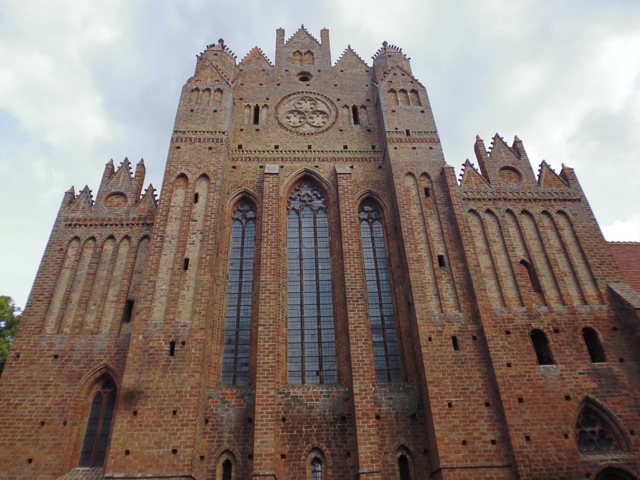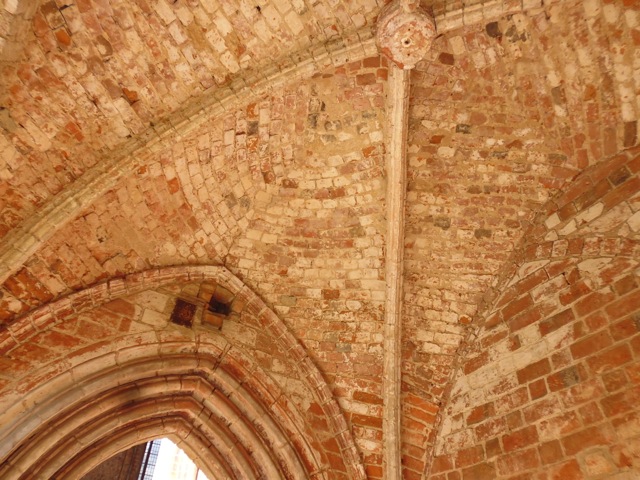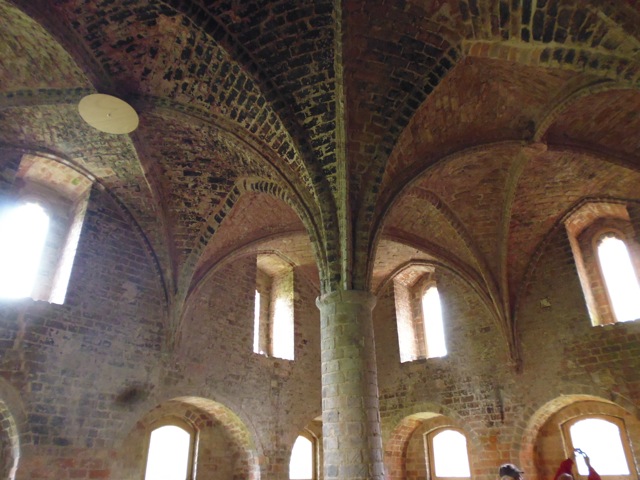The Broken Abbey at Chorin
Are you one of these Berliners, or Wahlberliners (Berliners by choice), who never goes to Brandenburg? ‘But why would you?’ a West Berliner told me, ‘It’s just water, trees, and people scared of each other because of the Stasi’. This sounds like the kind of metropolitan (stupid) snobbism familiar to New Yorkers who disdain the ‘bridge and tunnel’. I’ve heard plenty of times people say they can’t even visit upper Manhattan to see the Cloisters because it’s too far from the East Village. Well, Berlin has its own Kloster, reachable in about as much time (45 minutes by train from Hauptbahnhof), except this abbey was founded on site in 1258 by the Cistercian order and is located in a bucolic Unesco Biosphere-reserve of beech forest, meadows, lakes and wetlands.
‘The only place open to eat will be out by the Kloster’, they told us in the station hall, where they sell apple juice and postcards. Correct: the town is so quiet it seems abandoned. Two-story houses with peaked roofs and cared-for lawns––the door to the tiny village church is shut. We come to a field where a magnificent horse shakes out its mane then its tail. Perhaps he is the sole inhabitant. Does he do everyday maintenance? Does he have the key to the church? Can he cut a lawn?
The approach to the Abbey is through the green: a forest path. Between the beeches, the light falls in patterns––there’s still summer foliage although the temperature is autumnal. We reach one lake, with still murky water, then another, much clearer, where two restaurants overlook the forest: one closed.
The waiter, maybe 17, offers clipped and formal service, like he’s the butler in Sartre’s Huis Clos. But what does one expect up North? Spanish gregariousness? The menu is the same at many of these lakeside restaurants in Brandenburg, with prices higher than in Berlin: Pork Schnitzel (frozen) with French Fries, Pork cutlet with ‘Gypsy’ sauce [I assume the worst]. Pork Medallions with Mushrooms. There’s a side salad in a bright purple sauce. It’s not as greasy as we expect and washes down ok with Berliner Pilsner. I expect there’s the usual cake cut in squares from a pan, dry with plums on top. But we have the abbey to see.
It emerges, with its red brick, soon enough between the branches. Approaching through the forest, instead of from the road, gives me a romantic, medieval feeling, like I should be wearing a tunic for a re-enactment or have to knock on the door to beg hospitality from the monks. Instead, there’s the ticket booth, and prickly post-Communist service in the museum’s café.
It’s high gothic Backstein, but very reminiscent of the Romanesque, built in 1258. The Abbey became increasingly powerful until the Reformation, when it was dissolved in 1542. It was damaged by pillaging, especially during the Thirty Years War, which resulted in the destruction of the Abbey’s south side, and the abbey falling into even more ruin until repairs (spare, it seems) were made in the 19th Century, under the direction of Karl Friedrich Schinkel.
The stillness of the surrounding forests, lakes, and the abbey––half ruined, with neat missing walls, to seem instead unfinished––surpasses any human awkwardness. Perhaps it is the minimalism of the space, all is built of rose and ochre brick, each one with a different variation of colour, that sublimates bad feeling into the crisp afternoon of angled light illuminating the geometric surfaces, of arches, open windows, and half-enclosing walls. The long nave does not hem you in, but is blasted to the open air, so sunlight falls on the pews from which you can wander directly on to the grass.

Then there are contrasting underground spaces–-claustrophobic chambers where they heated the upper galleries, the great oven drums of the kitchens, a darkened brewery, all pointing to ingenuity and self-sufficiency, an enclosed community in the forest, serving a spiritual purpose well away from the world.
This apartness stays with us as we wander back through the forest, and the baked brick gothic no longer visible, there is just the filtering of light through the high branches and not a sound. Until there is crack and we see the shape of man on the path before us. We pause to greet him as we pass, as if he were the only stranger we had seen for days.
He looks at us quizzically as we smile, with distrust, and does not reply. He passes instead at a brisker pace.
Chorin can be reached directly from Berlin Hbf in 45 minutes by Deutsche Bahn’s Regional Express (RE) service. You can travel cheaply as a group with the Berlin-Brandenburg Ticket which allows unlimited travel for up to 5 people in those regions for a full day for 29 EUR (2,90 EUR each way to Chorin if there are five of you!) You can even print the group ticket off at home.









